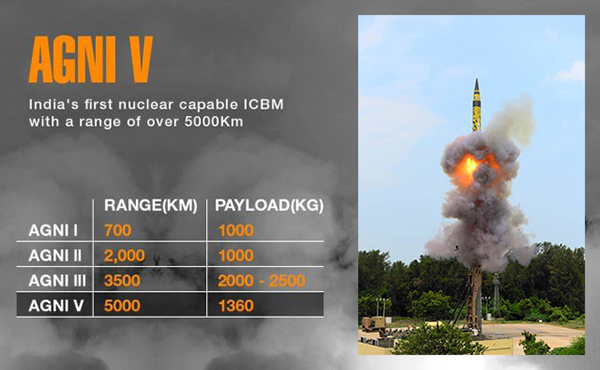India will now be able to strike targets beyond 7,000 km with the weight of the Agni-V missile reduced significantly. The Defence Research and Development Organisation, or DRDO, has been able to reduce the weight of the missile by replacing its steel content with composite materials.
“The weight reduction that has been achieved in the missile system is beyond 20 per cent and if the government wants, the nuclear-capable strategic missile can go beyond 7,000 km,” they added.
Earlier, such modifications have helped reduce the weight and extend the range of the strategic missiles – the Agni-III, which weighs around 40 tonnes, can strike targets at 3,000 km, while the Agni-IV, weighing slightly more than 20 tonnes, can cover a much longer range.
The extended range of the missile, which is part of the Strategic Forces Command, will give a variety of options to the planners during times of conflict.
India’s nuclear weapons programme is mainly deterrence against its adversaries, including China and Pakistan, as it has a no-first-use policy.
India is strengthening its second strike capability and working on the development of a submarine-launched ballistic missile. The decision to test the missile for its new maximum possible range will have to be taken by the government, sources said. India successfully carried out night trials of the Agni-V missile at its full range of 5,400 km on 15 December. The test was carried out to validate new technologies and equipment on the missile which are now lighter than before.
In October last year, India carried out the successful launch of the surface-to-surface ballistic missile Agni-V from the APJ Abdul Kalam Island in Odisha.
The missile, which uses a three-stage solid-fuelled engine, is capable of striking targets up to 5,000 km with a very high degree of accuracy, the defence ministry said in a statement.


















